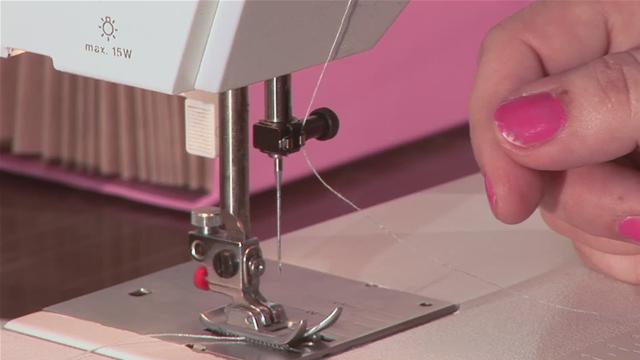Sewing is a creative and interesting skill. The knowledge of sewing give a confident feeling when it is applied to the construction of garments. The earlier method of sewing by hand is not applicable for all stages of garment making. Therefore, considerable emphasis is given to machine sewing. There are several machines in the market today, each with its own desirable features and advantages. Sewing machines range from most basic having only simple lock stitch to the electronic machines that use advanced computer technology having various functions for
Example : piping, binding, ruffling, pleating, darning, hemming and even making buttonholes and attaching fasteners. A good sewing machine is required to obtain quality products. One has to be familiar with the characteristics of different types of machines for selecting appropriate machine, depending upon the ability and requirements of the person.
1.1 TYPES OF SEWING MACHINES:
Sewing machines are now available in various models such as domestic model, tailor model, industrial model, portable and cabinet models. They may be operated by hand, treadle or electric motor.
Hand – Operated Sewing Machine:
This is the simplest form of sewing machine which is operated by hand. A detachable handle provided to the flywheel is used to operate the machine. This machine is generally suitable for domestic purpose because it does not help in speeding up the work.
Treadle Sewing Machine:
This machine is exactly like the hand sewing machine but it is operated by foot using an additional stand. In this type the balance wheel is operated by a belt with the help of lower stand, which is driven by feet. This machine operates faster than that of the hand-operated machine. This machine is suitable where there is no power supply. When handling this machine both the hands are free to handle the fabric, speeding up the work. Even some of the heavy-duty machines are operated by this method.
Electric Sewing Machine:
This is the fastest sewing machine. One needs practice to handle it. In an electric machine the balance wheel comes to motion by a belt, which is attached to an electric motor.
1.2 PARTS OF A SEWING MACHINE AND THEIR FUNCTIONS:
The basic structure of sewing machine is the same whether it is hand-operated sewing, treadle sewing machine or electric sewing machine. The basic parts of a sewing are listed below and seen in Fig.1
Fig. 1 Parts of a Sewing Machine
1. Spool pin: It is fitted on top of the arm to hold the reel.
2. Thread guide: It holds the thread in position from the spool to the needle.
3. Tension disc: The two concave discs put together with the convex sides facing each other. The thread passes between the two. The tension of the thread is adjusted by a spring and nut which increases or decreases pressure
4. Take up lever: It is a lever fitted to the body of the arm. Its up and down motion feeds the thread to the needle and tightens the loop formed by the shuttle.
5. Needle bar: This is a steel rod to hold the needle at one end with the help of a clamp. Its main function is to give motion to the needle.
6. Bobbin case: This moves into position to catch the top thread and form the stitch as the needle is lowered into the bobbin chamber.
7. Presser foot: It is fixed to the presser bar to hold the cloth firmly in position when lowered.
8. Presser foot lifter: A lever attached to the presser bar for raising and lowering the presser foot.
9. Stitch regulator: This controls the length of the stitch.
10. Bobbin winder: A simple mechanism used for winding threadon the bobbin.
11. Fly Wheel: When this is made to revolve, it works the mechanism of the motion
12. Clutch or Thumb Screw: This is in the center of the fly wheel and it engages and disengages the stitching mechanism.
13. Slide Plate: A rectangular plate, which facilitates the removal of the bobbin case without lifting the machine.
14. Needle Plate or Throat Plate: A semi-circular disc with a hole to allow the needle to pass through it.
15. Feed dog: This consists of a set of teeth fitted below the needle plate. It helps to move the cloth forward while sewing.
16. Face plate: A cover which on removal gives access to the oiling points on the needle bar, presser bar and take-up lever.
17. Spool pin for bobbin winding: Spool of thread is placed on this at the time of bobbin winding.
Reference :
Book Name : GARMENT MAKING
Editor
Miss. P. M. Geetha
M. Sc., (Textiles & Clothing)
Head of the Department of Garment Technology
Kamala Nehru Polytechnic for Women, Hyderabad











